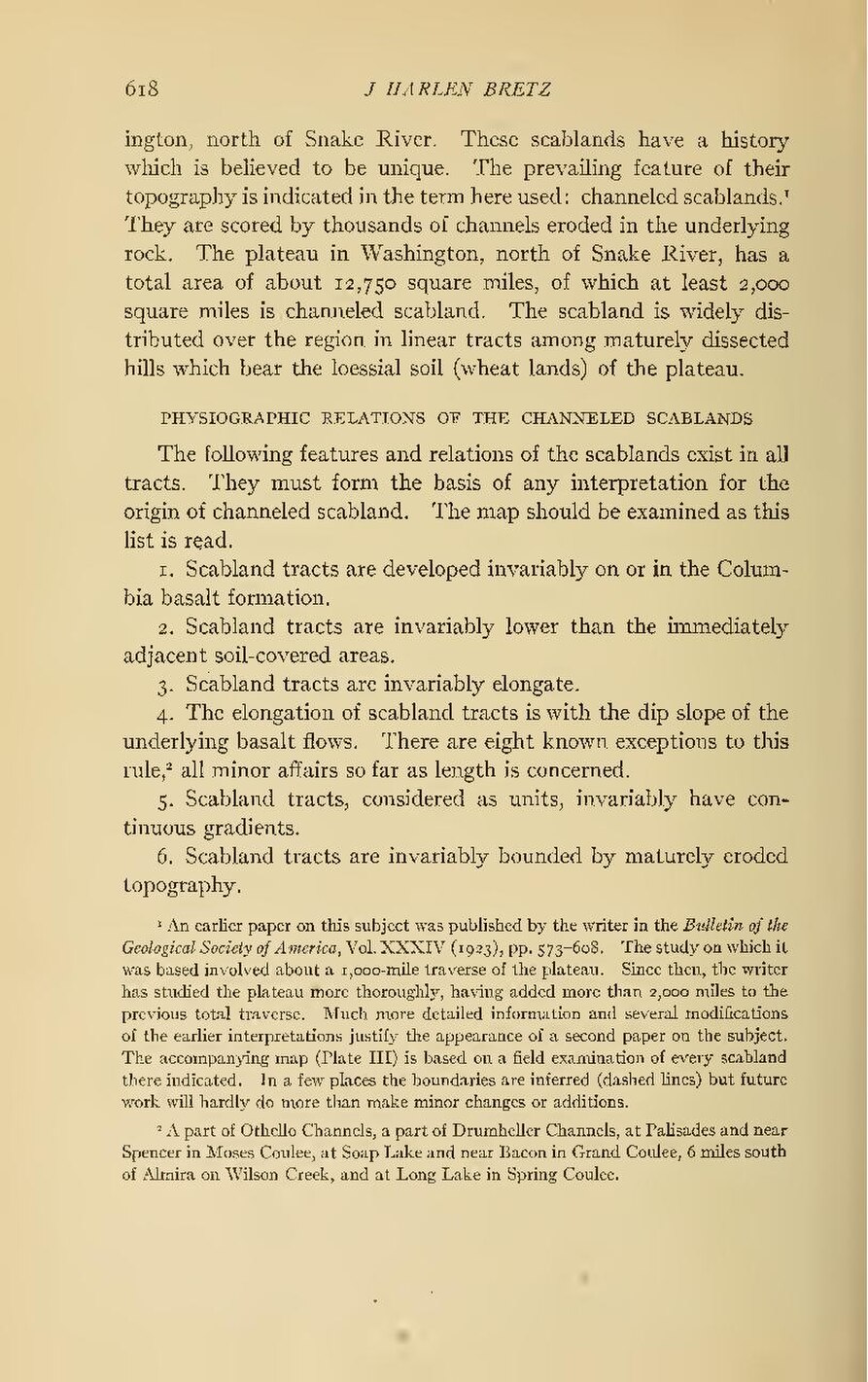ington, north of Snake River. These scablands have a history which is believed to be unique. The prevailing feature of their topography is indicated in the term here used: channeled scablands. [1] They are scored by thousands of channels eroded in the underlying rock. The plateau in Washington, north of Snake River, has a total area of about 12,750 square miles, of which at least 2,000 square miles is channeled scabland. The scabland is widely distributed over the region in linear tracts among maturely dissected hills which bear the loessial soil (wheat lands) of the plateau.
PHYSIOGRAPHIC RELATIONS OF THE CHANNELED SCABLANDS
The following features and relations of the scablands exist in all tracts. They must form the basis of any interpretation for the origin of channeled scabland. The map should be examined as this list is read.
- Scabland tracts are developed invariably on or in the Columbia basalt formation.
- Scabland tracts are invariably lower than the immediately adjacent soil-covered areas.
- Scabland tracts are invariably elongate.
- The elongation of scabland tracts is with the dip slope of the underlying basalt flows. There are eight known exceptions to this rule,[2] all minor affairs so far as length is concerned.
- Scabland tracts, considered as units, invariably have continuous gradients.
- Scabland tracts are invariably bounded by maturely eroded topography.
- ↑ An earlier paper on this subject was published by the writer in the Bulletin of the Geological Society of America, Vol. XXXIV (1923), PP. 573-608. The study on which it was based involved about a 1,000-mile traverse of the plateau. Since then, the writer has studied the plateau more thoroughly, having added more than 2,000 miles to the previous total traverse. Much more detailed information and several modifications of the earlier interpretations justify the appearance of a second paper on the subject. The accompanying map (Plate III) is based on a field examination of every scabland there indicated. In a few places the boundaries are inferred (dashed lines) but future work will hardly do more than make minor changes or additions.
- ↑ A part of Othello Channels, a part of Drumheller Channels, at Palisades and near Spencer in Moses Coulee, at Soap Lake and near Bacon in Grand Coulee, 6 miles south of Almira on Wilson Creek, and at Long Lake in Spring Coulee.
